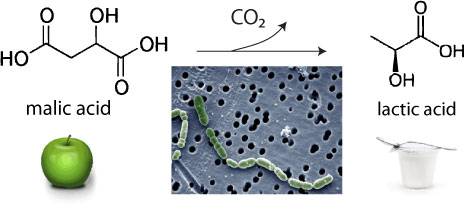What's Up Today?
The Wind & Sun (but the Winery is absolutely malolactic)
Dancing Tablecloths. Wind is Up today ... nothing up to recent Midwest standards, of course, but steady at 15 mph with gusts up to 25. These just-washed tablecloths from the winetasting this weekend (repurposed sarongs, actually) dance in the breeze ...
... and go crazy on the gusts.
Solar Flares Anyone? And the Sun is up, of course, to many things ... including this X-class solar flare from Sunday night from the huge sunspot AR1429 (aimed at Mercury and Venus) ... and a solar weather forecast for today (here) with a 30% chance of another X-flare eruption ... which, among many things, means lots of solar winds and beautiful Auroras on Earth where you don't usually get to see them.
Meanwhile ... inside The Winery. Things are a bit more quiet and peaceful. These oak barrels hold the 2010 vintage (grapes harvested in the fall of 2010) and the wine is just lazing around becoming more mature and balanced and flavorful by the month. (It will be bottled in August.) T. just "topped off" these barrels which means he replaced the wine that evaporated through the pores of the wood during the past month. (The barrels can lose up to 10% of their wine in a year through evaporation.) If you don't replace this missing wine, the oxygen in the remaining air pocket will age the wine fast, and in the end will kill it. Too much air and the wine becomes "oxidized," tasting stale and flat. But wine, especially red wine, cannot mature completely without oxygen, either; it's needed to neutralize certain off-smelling chemical compounds (rotten eggs anyone?). The solution? A vessel with a controlled oxygen supply ... like an oak barrel ... that you "top off" every month until the wine is ready to bottle.
Satori Sweet. See the half-barrel (30 gallons) in the foreground? It (as well as one full barrel in the stacks behind) contains Satori's first "sweet" wine -- Adorah's December Harvest Zinfandel. The grapes were picked on 12-1-2010 and fermented in such a way as to leave a little residual sugar in the wine. It will be bottled this month ... maybe this week ... and available in April or May. As we say on the just-designed label:
Roses on the nose.
A hint of sweetness,
chocolate and plum.
Yum.
Meanwhile on the other end of The Winery. The 2011 vintage is bigger than the 2010 (unlike many vintners last year, we had a very bountiful harvest) ... and it is still quite active. After all, it has only been out of primary fermentation (the changing of the sugars in the grapes to alcohol after harvest) for a few months. All red wines undergo a second fermentation called malolactic fermentation after malum, the Latin word for "apple." Some winemakers attempt these dual fermentations simultaneously, but for Satori wines, T. chooses to complete the primary fermentation in open-air containers and then transfer the young "dry" (containing no residual sugar) wine to oak barrels for the second, malolactic fermentation or MLF, as it is called.
That's Mr. Malic to You. In the young wine, there is an acid -- malic acid -- that tastes astringent, like an unripe, green apple. That may good for white wines, especially young white wines, which need every gram of acid to give them life, freshness and finesse. But raw, astringent acid in fermented red wine ... not so good.
This, not That. At some point, malic acid is often attacked by bacteria (good bacteria! good bacteria!) that transform it into lactic acid, which is milder. The acid content of the wine drops a bit, and it tastes softer, fuller.
Where is our confounded lactic acid bacteria? MLF is a natural occurrence in some wine growing regions, but in California, South Africa and Australia, lactic acid bacteria are not present in sufficient numbers to start the process ... so the young wine is inoculated with selected, cultivated strains of bacteria that eliminates the malic acid. If you don't, there is a danger that it will ferment in the bottle. (Definitely not so good.)
Eavesdropping on Maturing Wine. Unidentified winemaker actively listening to his wine aging ... or he has fallen asleep on the bung hole (that's what the side hole in a barrel is called and the stopper to plug it is called a bung). T. raises the temperature in the winery to 68 degrees and the lactic acid bacteria starts to eat up the malic acid. Depending upon all sorts of variables, the process can take a couple of weeks or a couple of months. So, periodically, you listen to, and taste, the wine. First, it gives off a very fine spray, then bubbles (carbon dioxide) ... certain signs that "it's alive!"
Meanwhile, back at the Sun. Well, we waited to send "today's" post and, sure enough, Old Helios let rip an X-Flare early this morning, Wednesday. According to Spaceweather www.spaceweather.com, "This one is the strongest yet, an X5-class eruption ... that appears direct enough to deliver a glancing blow to our planet's magnetic field on March 8-9." What a way to celebrate International Women's Day, the 8th. Enjoy the Show.
satori






No comments:
Post a Comment